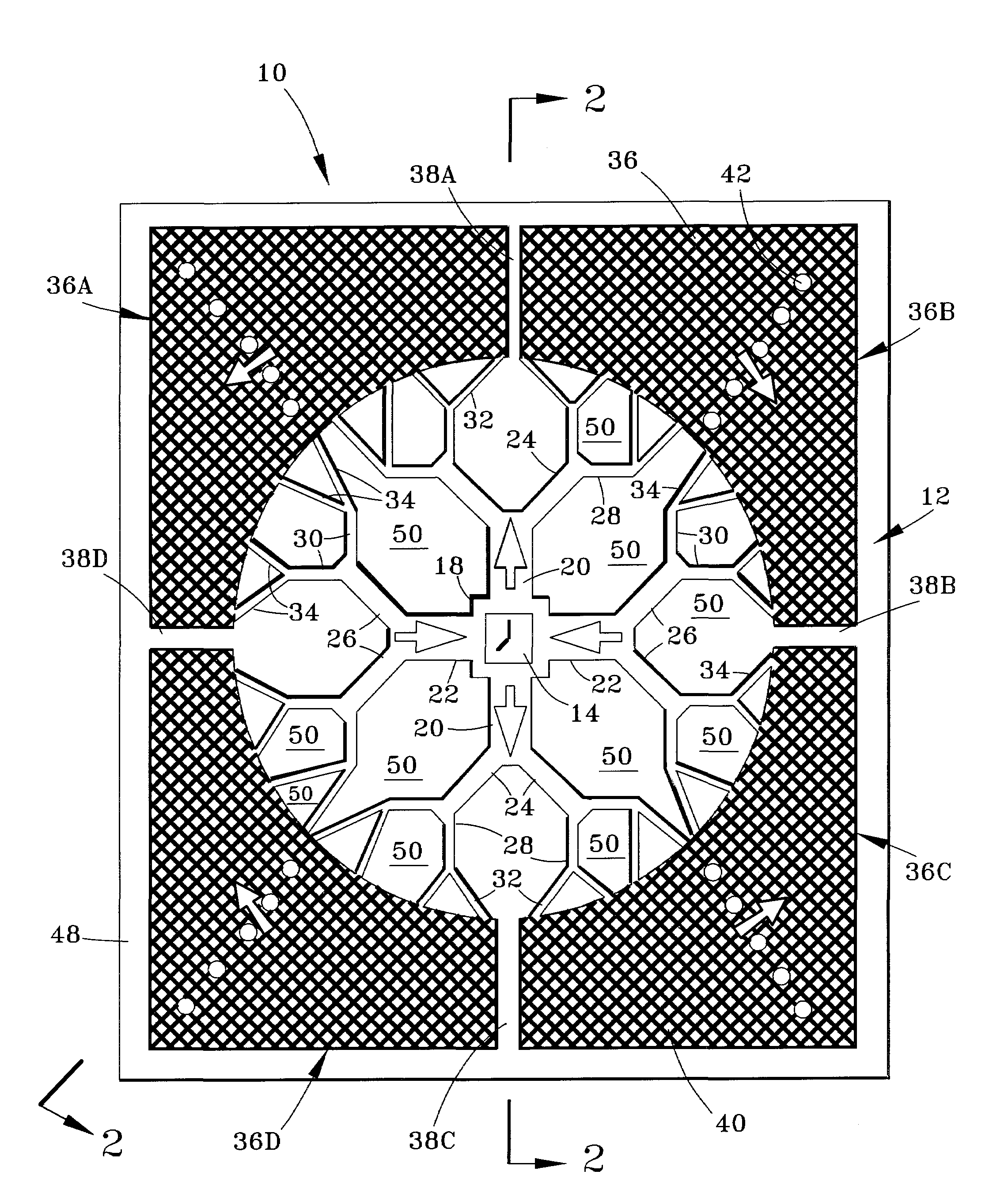Cooling device for an electronic component
a technology for electronic components and cooling devices, which is applied in the direction of indirect heat exchangers, light and heating apparatuses, laminated elements, etc., can solve the problems of increasing the number of switching events over time per device, the migration to smaller design processes, and the inability to keep up with the increasing complexity of faster integrated circuits. , to achieve the effect of uniform cross sectional area, avoiding bottlenecks, and rapid removal of hea
- Summary
- Abstract
- Description
- Claims
- Application Information
AI Technical Summary
Benefits of technology
Problems solved by technology
Method used
Image
Examples
Embodiment Construction
[0022]FIG. 1 shows a schematic overview of a channel system 12 defined in a cooling plate 10 adapted for cooling a semiconductor device 14. The location of the device 14 relative to the channel system 12 is superimposed in FIG. 1, though it is to be understood that the device 14 is not required to be located within the channel system 12. Instead, the device 14 may be limited to contact with an outer wall 16 (FIG. 2) of the cooling plate 10 that encloses the channel system 12 and separates the channel system 12 from the device 14, or may be partially inserted into the channel system 12 through the wall 16 (FIG. 3). The channel system 12 is delimited by the outer wall 16 and a base wall 46 (FIGS. 2 and 3), as well as structures 38A-38D, 48, and 50 between the outer and base walls 16 and 46, as discussed in more detail below. The channel system 12 can be defined in the base wall 46 of the plate 10, such as by etching the base wall 46, or can be patterned in a layer sandwiched between t...
PUM
 Login to View More
Login to View More Abstract
Description
Claims
Application Information
 Login to View More
Login to View More - R&D
- Intellectual Property
- Life Sciences
- Materials
- Tech Scout
- Unparalleled Data Quality
- Higher Quality Content
- 60% Fewer Hallucinations
Browse by: Latest US Patents, China's latest patents, Technical Efficacy Thesaurus, Application Domain, Technology Topic, Popular Technical Reports.
© 2025 PatSnap. All rights reserved.Legal|Privacy policy|Modern Slavery Act Transparency Statement|Sitemap|About US| Contact US: help@patsnap.com



